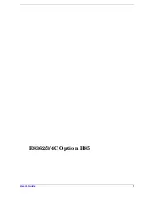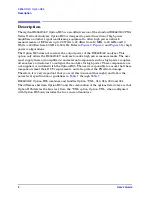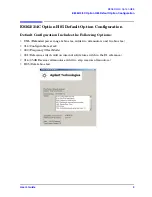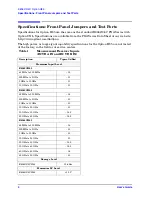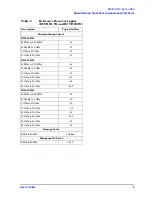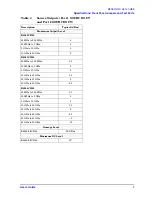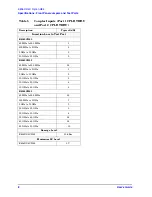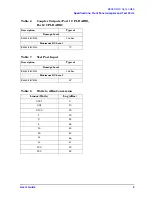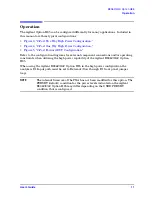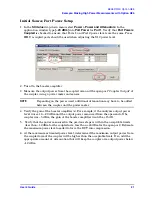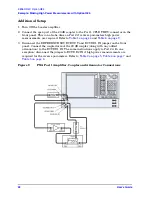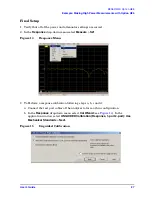
User’s Guide
13
E8362/3/4C Option H85
Operation
Figure 3
,
“2-Port Two Way High Power Configuration” on page 14
. Ports 1 and 2 are
configured to allow the user to stimulate each port with high power. Each port must have a
high power amplifier and high power coupler. The isolators, reference and measured
receiver attenuators are optional. They are dependent on the high power couplers coupling
factor, amplifiers reverse isolation and power required to test the device. The attenuator,
located at the high power coupler arm, may not be required if the coupling factor
attenuates the signal adequately for the reference receiver channel. The same is also true
for the measure receiver channels. The measure receiver attenuators for A IN and B IN
may have sufficient range to compensate for the users desired power level. The isolators
maybe eliminated if the amplifier reverse isolation is high.
Figure 4
,
“2-Port One Way High Power Configuration” on page 15
. This configuration
allows the user to stimulate Port 1 with high power. Port 1 must have a high power
amplifier, high power coupler, isolator and attenuators. The isolator, reference and
measured receiver attenuators are optional. They are dependent on the high power
couplers coupling factor, amplifiers reverse isolation and power required to test the device.
The attenuator, located at the high power coupler arm, may not be required if the coupling
factor attenuates the signal adequately for the reference receiver channel. The same is
true for the measure receiver channels. The measure receiver attenuators for A IN and B
IN may have sufficient range to compensate for the users desired power level. Port 2 has a
high power isolator located between the SOURCE OUT and CPLR THRU. This isolator is
required to protect the components inside the PNA. The isolator can be replaced by a high
power attenuator or circulator.
Figure 5
,
“2-Port Forward DUT Configuration” on page 16
. In this configuration the DUT
supplies the power. The measure receiver attenuator for B IN may have sufficient range to
compensate for the users desired power level. Port 2 has a high power isolator located
between the SOURCE OUT and CPLR THRU. This isolator is required to protect the
components inside the PNA. The isolator can be replaced by a high power attenuator or
circulator. Reference Channel R1 can be set to internal.



